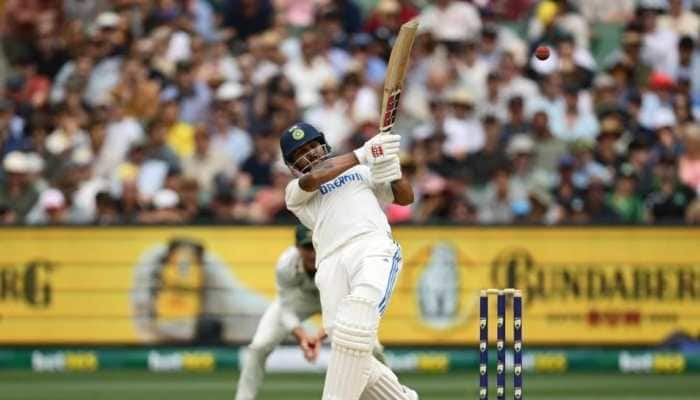F1: Pirelli tyres, KERS and DRS
With Formula 1 becoming more of a strategy driven sport with pits stops tactics and shaving-off time, F1 this season has taken these strategies to the next level with the introductions of KERS, DRS, 107 % faster qualifying clause, F-Duct, double diffusers and what not.
Trending Photos
)
Vineet Ramakrishnan
With Formula 1 becoming more of a strategy driven sport with pits stops tactics and shaving-off time, F1 this season has taken these strategies to the next level with the introductions of KERS, DRS, 107 % faster qualifying clause, F-Duct, double diffusers and what not. Pirelli became the sole supplier of types this season and also for the coming two calendar years, and with it, they brought the most talked about aspect of F1 this year, the tyres. Let’s take a look at what is new and exciting in F1 this season.
Pirelli PZero tyres
Based on the condition of the track surface, there are two major categories of tyres that are being used in the Race Weekend: DRY tyres and WET tyres.
Dry Tyres
The tyres for dry weather, known as slicks, have a tread that is devoid of grooves or channels.
Supersoft (Red colour): This is the softest tyre in the range and it is designed to provide peak performance and roadholding on slow and twisty circuits such as Monte Carlo and the Hungaroring.
Soft (Yellow colour): This tyre is used on circuits with comparatively low levels of tyre degradation. Soft tyres do not tend to last for as long as hard tyres, so they are frequently used in qualifying and for short stints during a race.
Medium (White colour): Along with the hard compound, this will be one of the most commonly used tyres during Pirelli`s debut season. It is a versatile tyre designed to work well in a wide range of conditions and is well suited to circuits with varying characteristics.
Hard (Silver colour): This is also a frequent choice, as it is a tyre designed to provide the maximum endurance in the toughest conditions. A hard tyre takes longer to reach its peak operating temperature than a softer tyre, so is best suited to longer stints.
Wet Tyres
The wet tyres are characterised by grooves in the tread pattern.
Intermediate (Light Blue colour): These tyres have light grooves to disperse water, but this reduces the contact patch and leads to less grip on a dry track. When the rain is heavy, drivers will switch to wet tyres.
Wet (Orange colour): These tyres have deep grooves in them, similar to a road car tyre, and are designed to expel more than 60 litres of water per second at 300kph. A road car tyre can only displace about 10 litres of water per second, at much lower speeds.
Pirelli has also listed out the tyre choices for the few of the Races for this season.
Australia: PRIME – Hard, OPTION – Soft
Malaysia: PRIME – Hard, OPTION – Soft
China: PRIME – Hard, OPTION – Soft
Turkey: PRIME – Hard, OPTION – Soft
Spain: PRIME – Hard, OPTION – Soft
Monaco: PRIME – Soft, OPTION – Super Soft
Canada: PRIME – Soft, OPTION – Super Soft
Europe: PRIME – Soft, OPTION – Super Soft
Britain: PRIME – Hard, OPTION – Soft
KERS
KERS or Kinetic Energy Recovery Systems was first introduced in 2009 and has made a re-entry this season.
How does it work? : KERS take the waste energy generated under braking and turns it into additional power. Whenever brakes are applied the Kinetic Energy is caught and directed into an electric motor where it is converted into electrical energy and stored in a battery. Just by a push of the button an additional 80bhp can be sent to the back of the wheel either in small dozes or all out for 6 seconds.
KERS can make the lap time quicker by round 0.3 secs.
But as a rule to over take, drivers need to be 1.5 secs faster per lap. Since most racers drive with KERS it is used more as strategic move, it is important how a driver distributes his KERS power over each lap; it can be used as defence or for attack. KERS help in qualifying but its best usage is while starting. Most of the drivers who are equipped with KERS would have already charged batteries at the starting formation, so if a gap appears they can move ahead easily or can defend their position using KERS.
This is made available to the driver in fixed quantities per lap via a steering wheel-mounted ‘boost button’.
DRS (Drag Reduction System)
Through DRS or Drag Reduction system, drivers can adjust the rear wing from the cockpit instead of the adjustable front wing used in the last season. But only drivers with suitably equipped cars can avail this technology. During the race, the rear wings can be adjusted to reduce drag.
However, it can be used only in defined overtaking zones and when the driver is close enough to the car in front. The adjustable rear wing can make the car more streamlined and can give the drivers 10 km more speed.
The system’s availability is electronically governed - it can be used at any time in practice and qualifying (unless a driver is on wet-weather tyres). The system is then deactivated once the driver brakes. In combination with KERS, it is designed to boost overtaking.
107% qualifying rule
During the first phase of qualifying, any driver who fails to set a lap within 107 percent of the fastest Q1 time will not be allowed to start the race. However in exceptional circumstances, which could include a driver setting a suitable time during practice, the stewards may permit the car to start. Hispania have already faced the wrath of this 107% qualifying rule.
Stay informed on all the latest news, real-time breaking news updates, and follow all the important headlines in india news and world News on Zee News.
Advertisement
Live Tv
Advertisement







)
)
)
)
)
)
)
)
)
)
